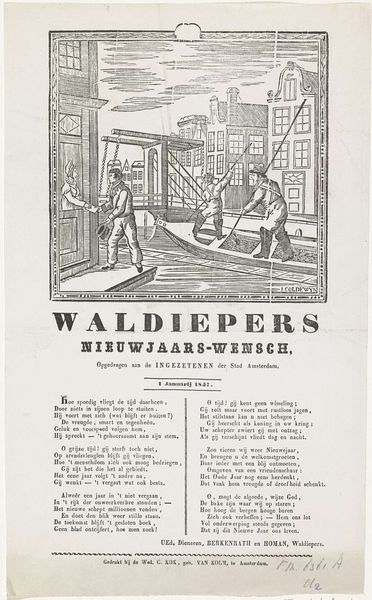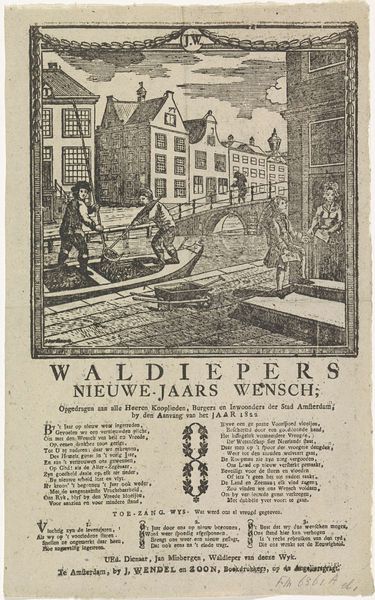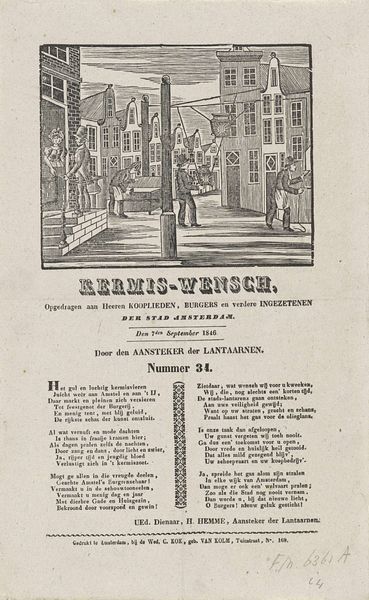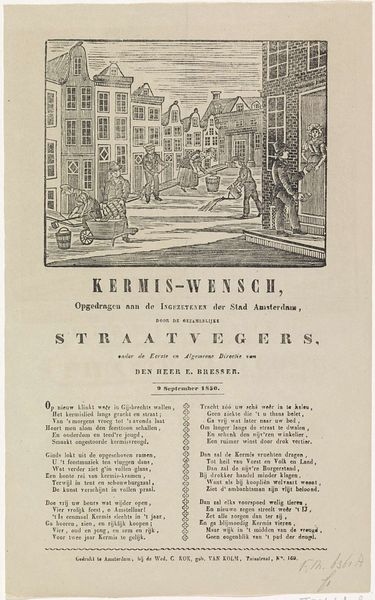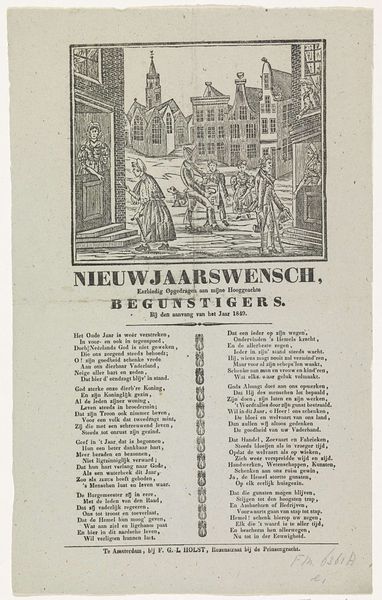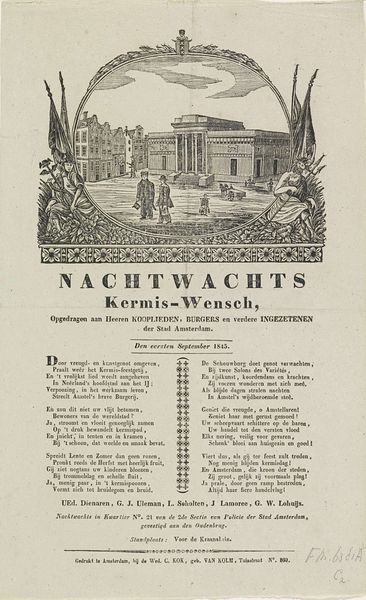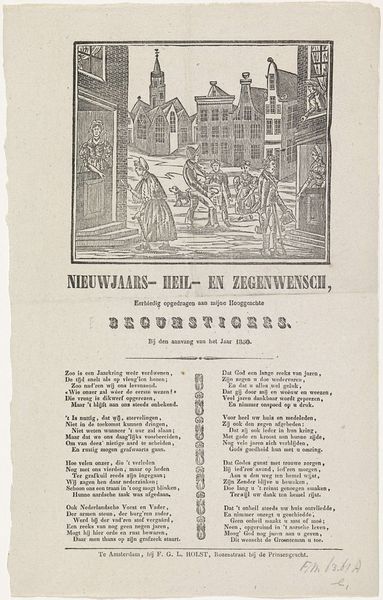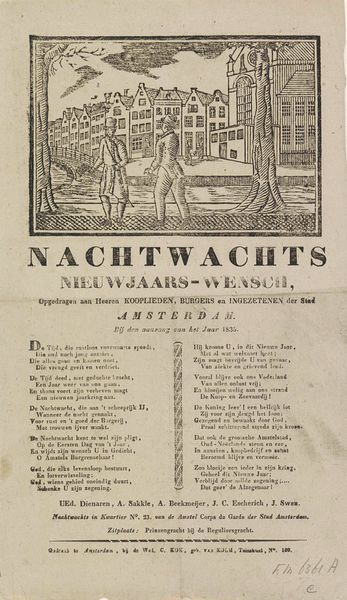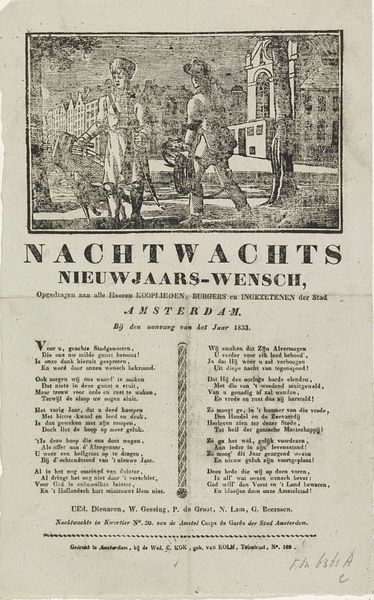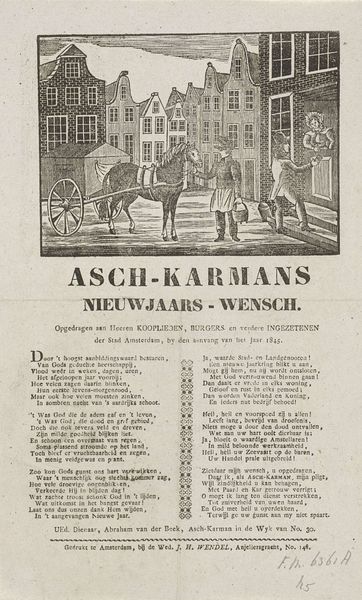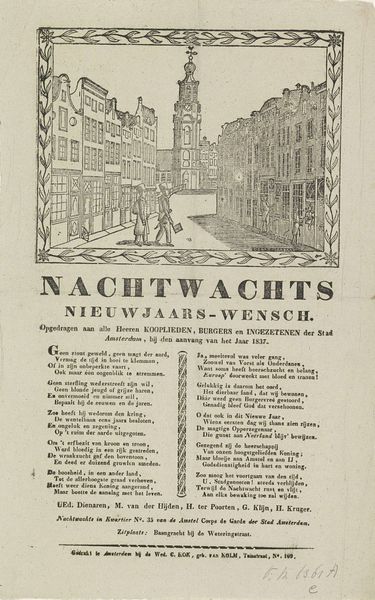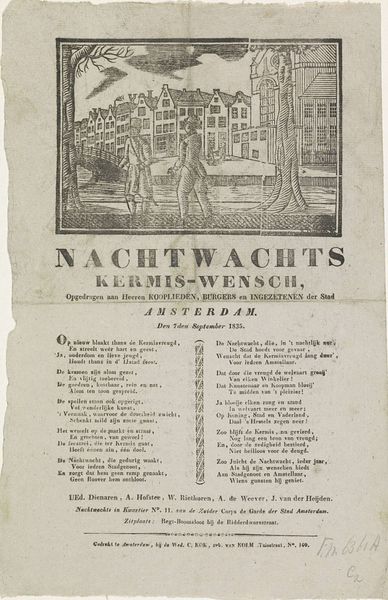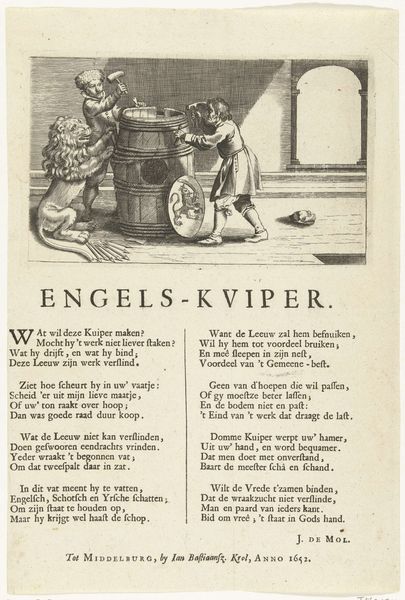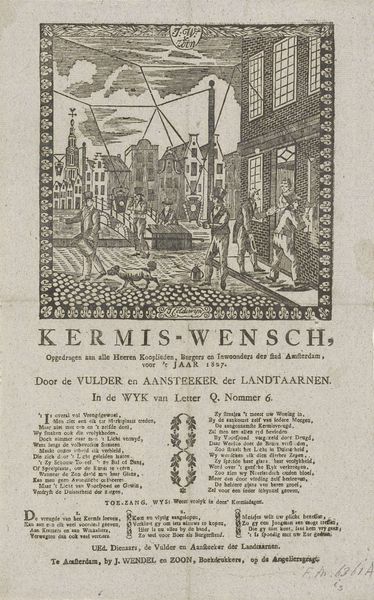
graphic-art, print, textile, engraving
#
graphic-art
#
dutch-golden-age
# print
#
textile
#
cityscape
#
genre-painting
#
engraving
Dimensions: height 340 mm, width 207 mm
Copyright: Rijks Museum: Open Domain
This broadside print, now held at the Rijksmuseum, was made in 1853 by Jacob Coldewijn, using the technique of etching. It depicts Amsterdam’s waldiepers, or mud-scoopers, wishing the city’s residents a happy kermis, or fair. Etching is an intaglio printmaking method, where the design is incised into a metal plate, inked, and then printed. The crisp lines of the image speak to this process, contrasting the grimy labor of the mud-scoopers with the clean, ordered aesthetic of the print. These workers dredged the canals, removing sediment and debris. Their thankless work kept the city navigable and sanitary. The print acknowledges their social role, depicting them shaking hands with a well-dressed man – perhaps a merchant – in a gesture of mutual respect. It is a reminder that even celebratory occasions rest on the labor of ordinary people, and of the critical role that printed ephemera played in the social life of the 19th century.
Comments
No comments
Be the first to comment and join the conversation on the ultimate creative platform.
